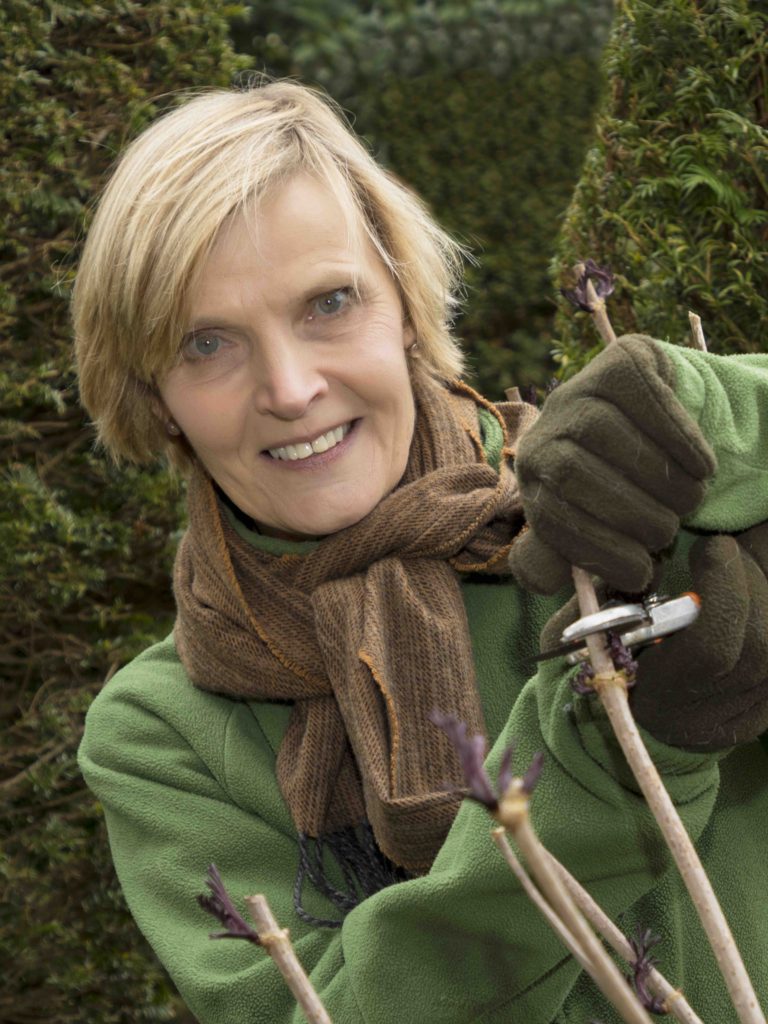
We’re pretty much confined to barracks now in our gardens and local parks, but our daily exercise walks can be livened up no end by one of those many winter shrubs that puts its best foot forward in the coldest months of the year.
As the most normal of the 3growbags sisters (let’s face it, the other two are in parallel universes, one pottering in a surreally sheltered walled courtyard and the other attempting to garden in the northern tundra), I will be showcasing a couple of sparkling all-rounders for lifting your winter spirit.
My first beauty is a pink pussy willow Salix gracilistyla ‘Mount Aso’, our feature picture today. I photographed this at RHS Wisley in mid-January last year (sadly Wisley is currently out of bounds for us) so it’s a great early show of colour and you can’t help but smile when you see it. I’ve found them for sale at around a fiver from Parker’s (link at the bottom) so I’ve ordered three and plan to give one each to E and C as a devious experiment to test their respective horticultural resolve. At that price they’ll only be small plants (more like rooted cuttings I imagine) but willows grow phenomenally quickly and actually thrive in harsh climates, so Caroline won’t be able to play her usual ‘get out of jail’ card.
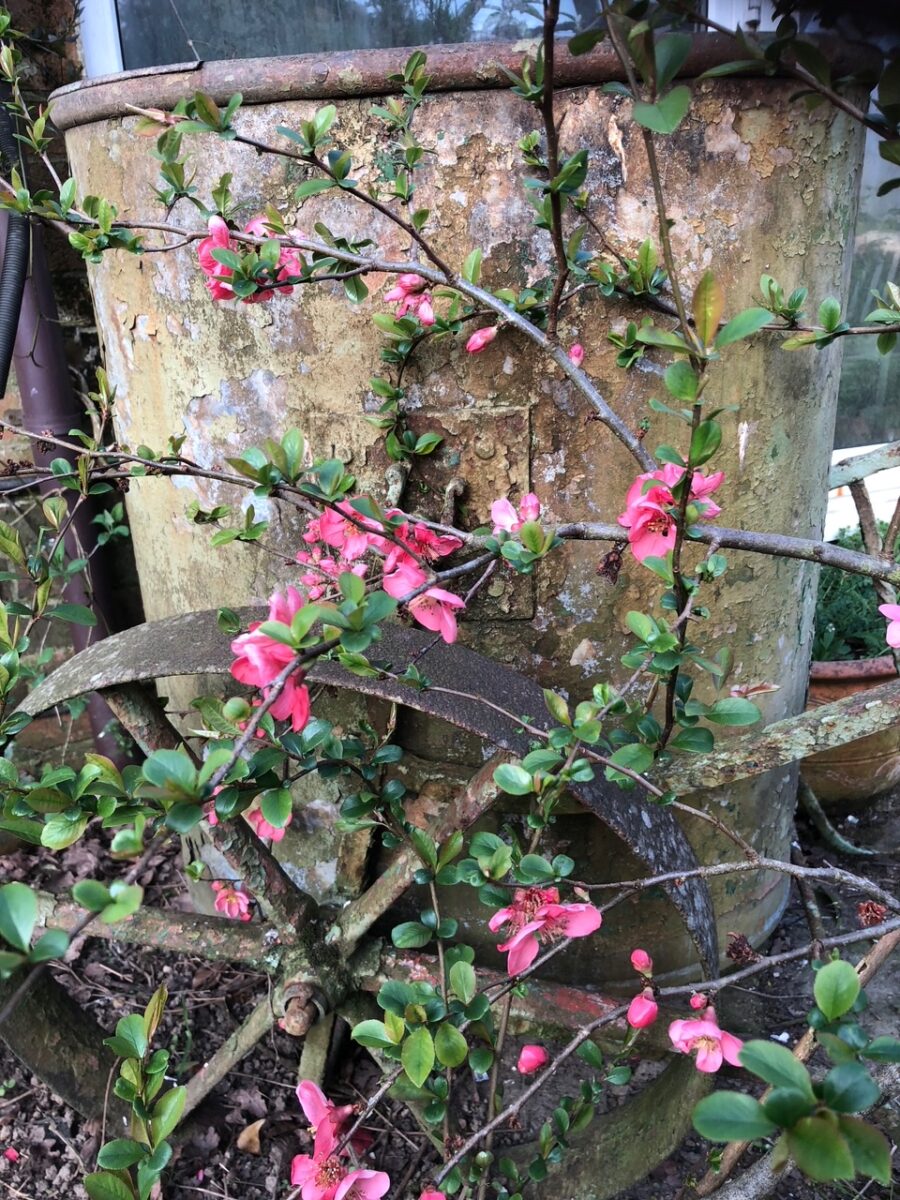
My next candidate is flowering quince, Chaenomeles. Normally classed as a spring flowerer to be trained rather tortuously against a low house wall, the pretty cultivar I have, Chaenomeles x superba ‘Pink Lady’ is much tougher than she looks. She is in full flower now, in mid – January, and happily spreading herself in all directions.

The most normal? Laura? I know we’re getting accustomed to a ‘new normal’ but Laura’s garden requires a whole new mind-set. If packs of dogs, flocks of chickens and polytunnels in various stages of degeneration aren’t your thing, I’d stick with me.
To be fair my Eastbourne garden IS a favoured spot compared to most parts of the UK. Being 200 yards from the English Channel, walled and south-facing makes it a very salubrious environment for some of the tenderer shrubs in the winter-flowering category. We had a frost in the garden a few days ago, but that is rarer than a Tescos delivery slot round here.
Coronilla Valentina subsp. glauca ‘Citrina’ is much prettier than its insane name suggests. In my garden it flowers for months, from now until April, basically. Its soft little pinnate leaves are evergreen and set off the fragrant pea-like yellow flowers to perfection. It’s not very big when mature – about 3 ft.(90 cms ) – and grows pleasantly bushy.
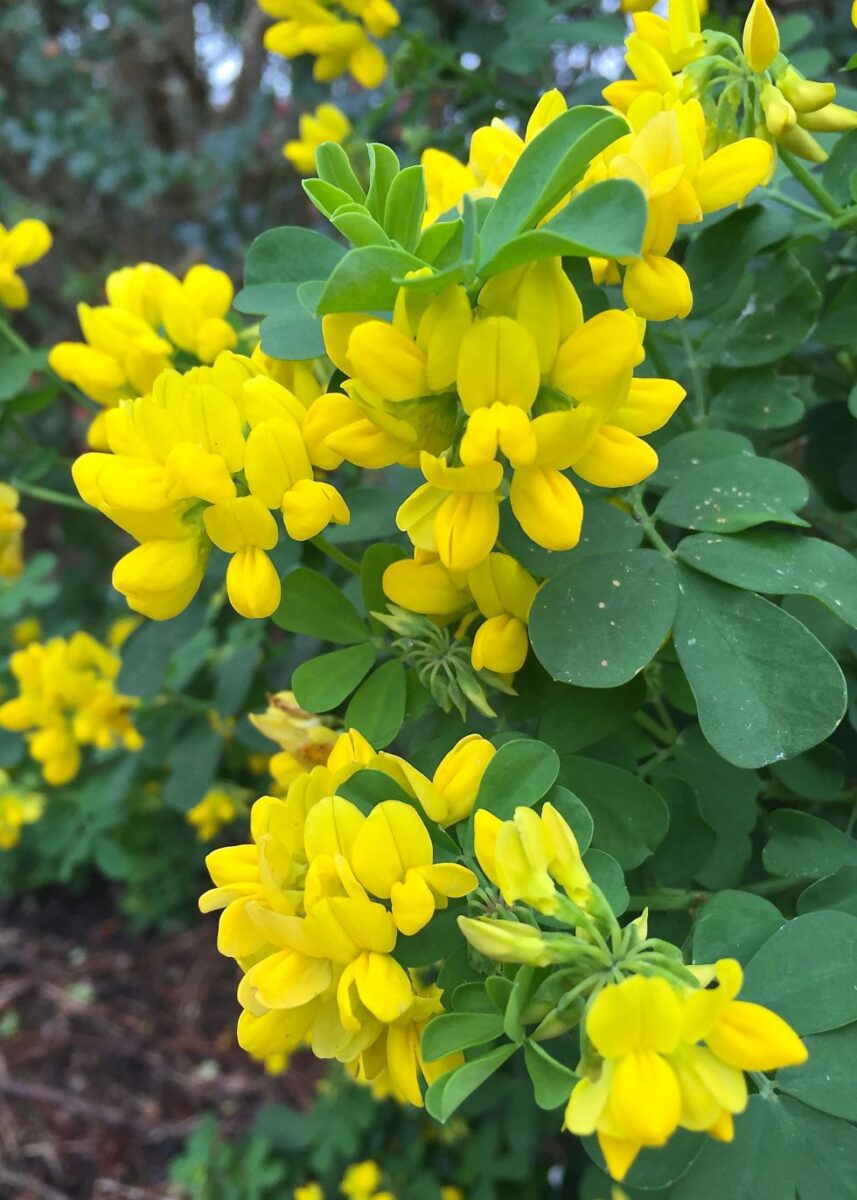
It likes the sun, but is not fussy as to soil (hurray!) as long as it’s not in a swamp, and is very easy to look after. I just give it an all-over trim in May after it’s finished flowering (it’ll turn up its toes if you prune it hard), and it stays as a neat green mound for the rest of the year.
Another lovely winter-flowering shrub, for a moist semi-shaded place this time, is Edgworthia chrysantha You don’t often see it, but it’s a beautiful plant when it’s happy. Not only does it flower at a time when not much else is out, the blooms are also sweetly scented (the yellow ones are more fragrant than the orange or red ones). By the way, we talk about some of our favourite winter-scented plants in an earlier blog – the link is at the bottom. It has another advantage in that it covers itself in rather gorgeous bluish foliage once the flowers are done.
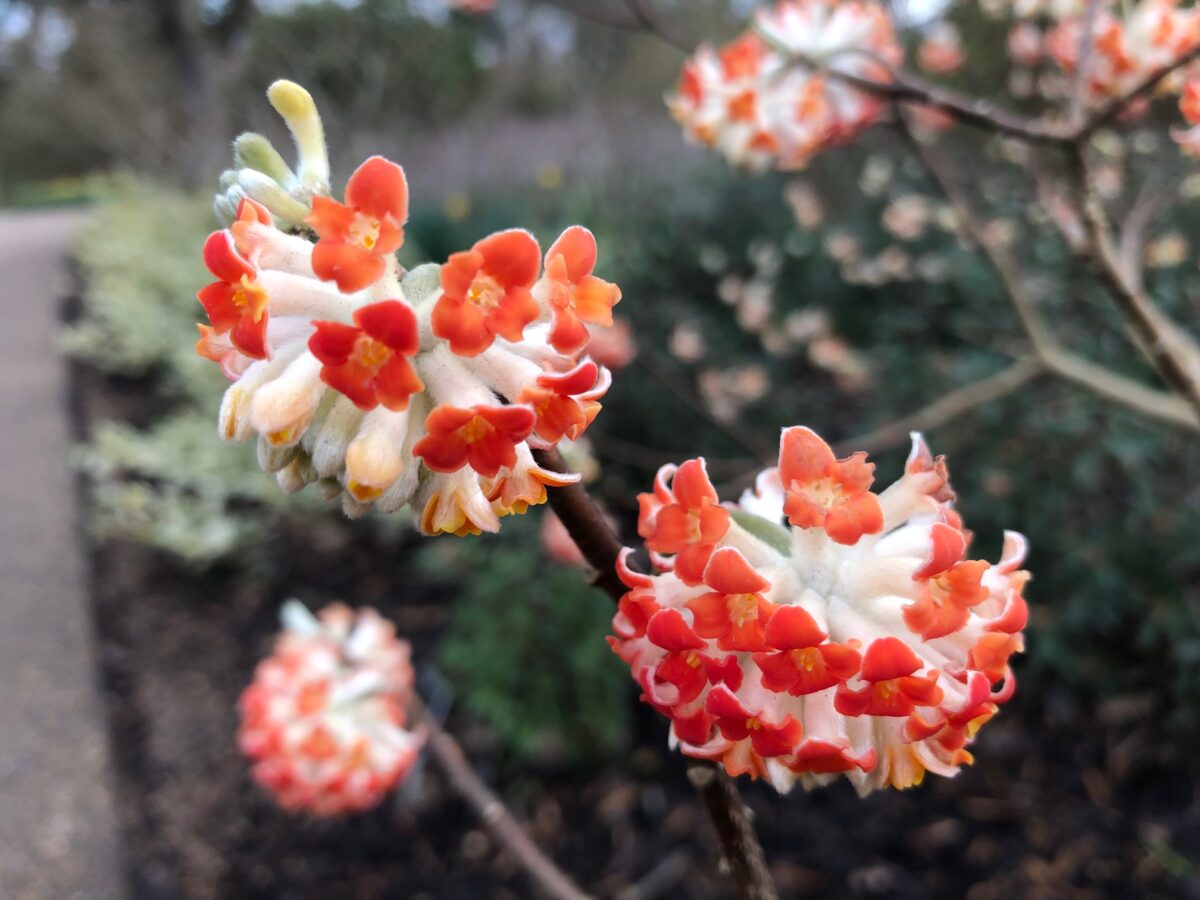
One rather clever trick with the pruning, is to cut back several stems at different heights in March/April, some of them near to ground level, which results in lots more stems coming up which will bear flowers the following winter.
Edgworthia is related to daphnes and like them, it does like a sheltered place to live, perhaps next to a warm wall. Probably make a great cool conservatory plant in cold areas, actually. Talking of which, here’s Caroline….

In truth, both my sisters live a charmed horticultural life in the sunny south. Where is the sense of adventure if your thermometer isn’t lodged in the blue zone for three solid months? Don’t they miss the thrill of herbaceous borders that lean, en masse, to the left?
To my mind their choices aren’t really shrubs – just finicky little fluffy things – the equivalent of thongs compared to my big Scottish pants. Look at my first choice – if it wasn’t for the freezing fog, you’d be able to see the North Sea just over its brow here at my husband’s house just east of Edinburgh. Yes, of course, it’s a Hebe……. rakaiensis to be precise.
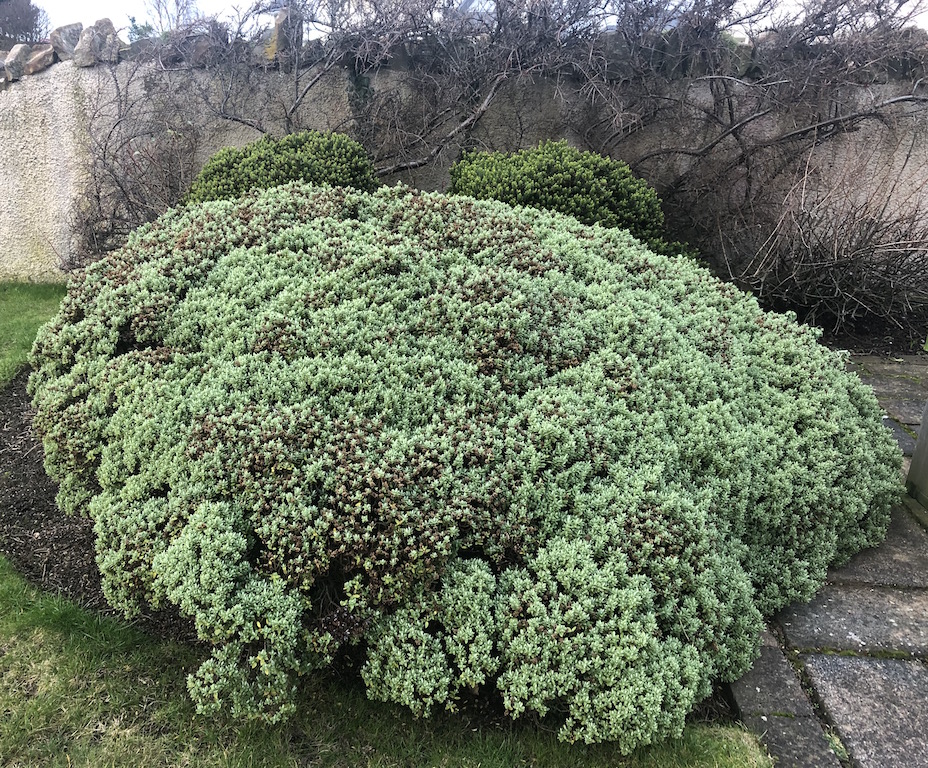
Now, shrubby Veronica (its other name but maybe, also, your old school chum) knows her job. Not a thing of beauty maybe but the role of a winter shrub in my view is not to be one of your frillies, but to act as a stout pair of drawers protecting your delicates. In this case good old ‘Ronnie’ is shielding two rather-too-wafty-for-the-climate cream roses. They were gifted to my husband and me on the event of our marriage and they’re still alive to mark our fourth anniversary this year…surprises all round, I think.
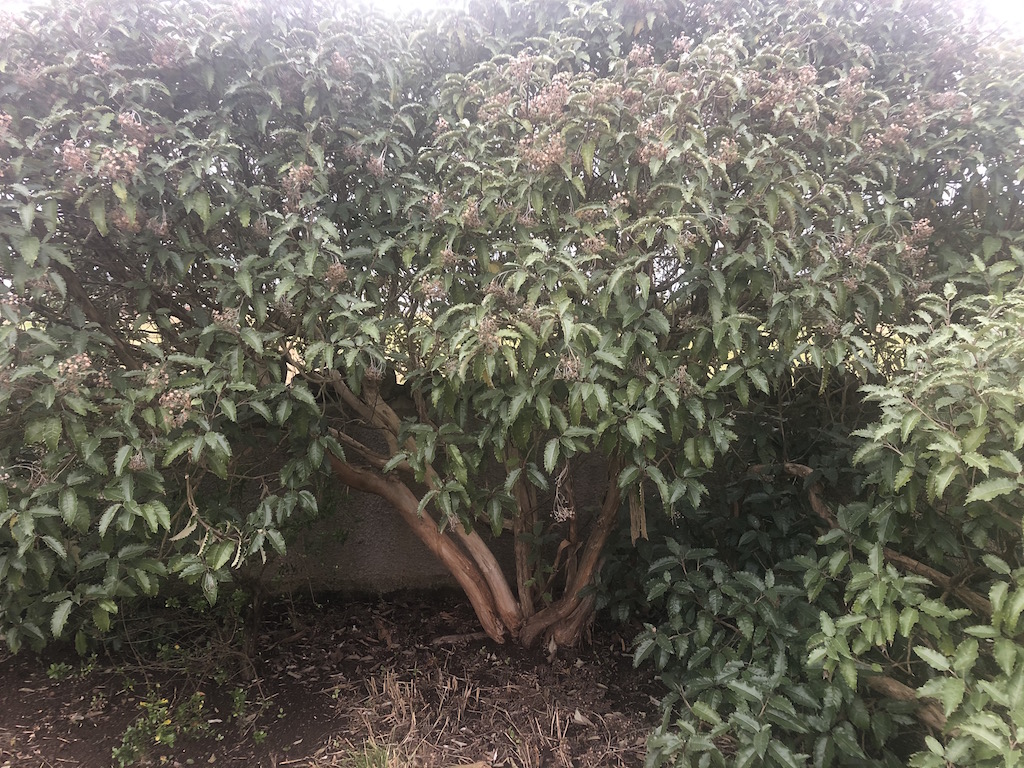
Of course hebes hail from New Zealand and what a good match that country is for proper UK conditions i.e. driving rain and constant wind. It’s also the home of my second choice – Olearia macrodonta. It’s not pretty as such, but it has satisfyingly leathery sage leaves and the same qualities as a decent mac – wonderfully waterproof if not up for the BIG FREEZE (so they are a little trickier inland, but of course up here you’re rarely far from the coast). Yes, small enough for a town garden but large enough to give height and form, olearias are Scotland’s answer to the Med’s olive trees although, in my view, its pretty daisy flowers still struggle to be a substitute for a good beach-bar waiter. Sigh.
NB This is where you can order that pink pussy willow at a bargain price J.Parker’s.
NEXT NB Louise has a plant that both looks good and tastes good as her great plant this month, read about it by clicking on the box below.
MORE NB For a sisterly discussion about scented winter plants, check out this earlier blog.
AND EVEN MORE NB If you’d like a bit more gardening chit-chat from the3growbags, just enter your email address here and we’ll send you a new post every Saturday morning
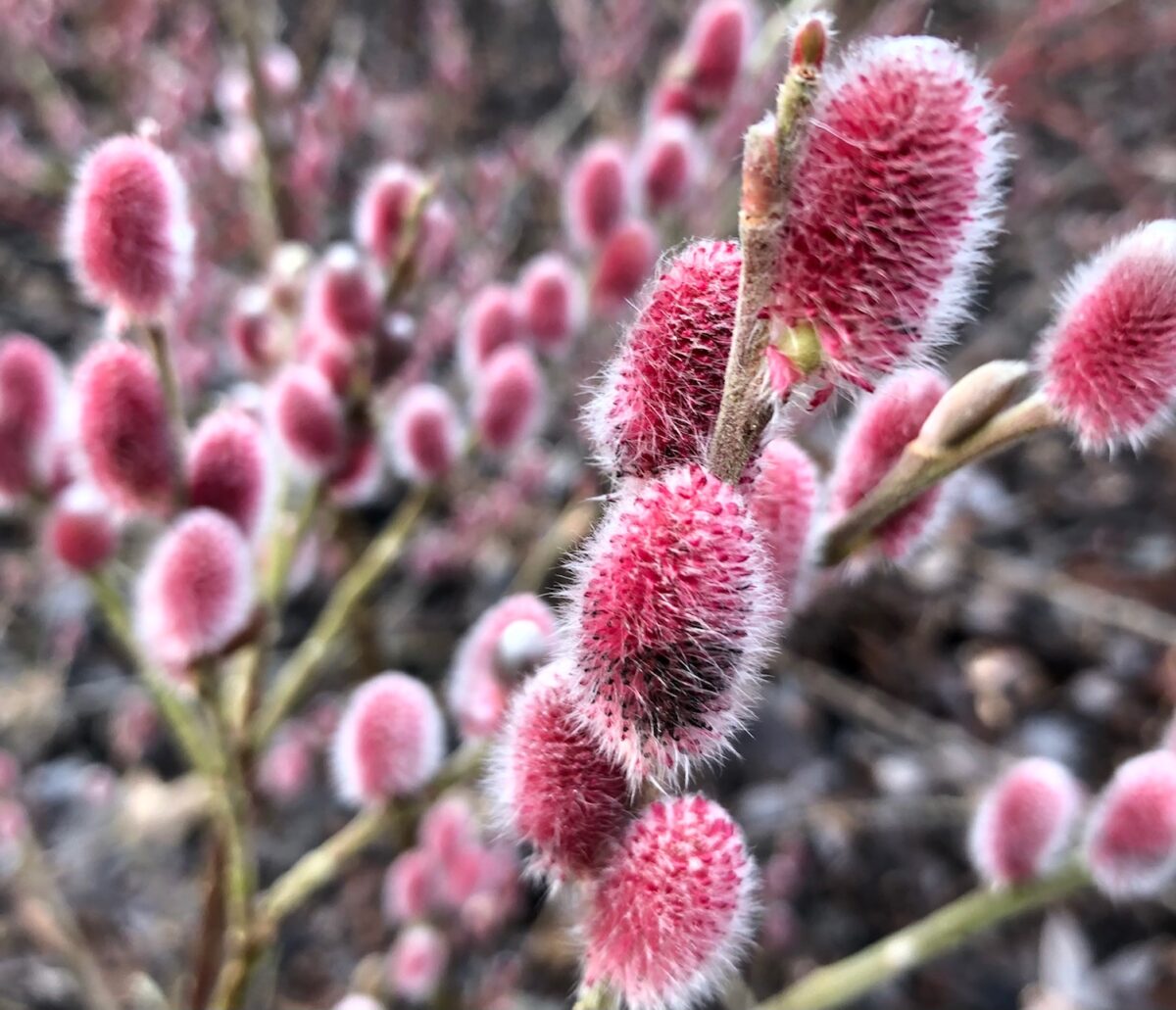
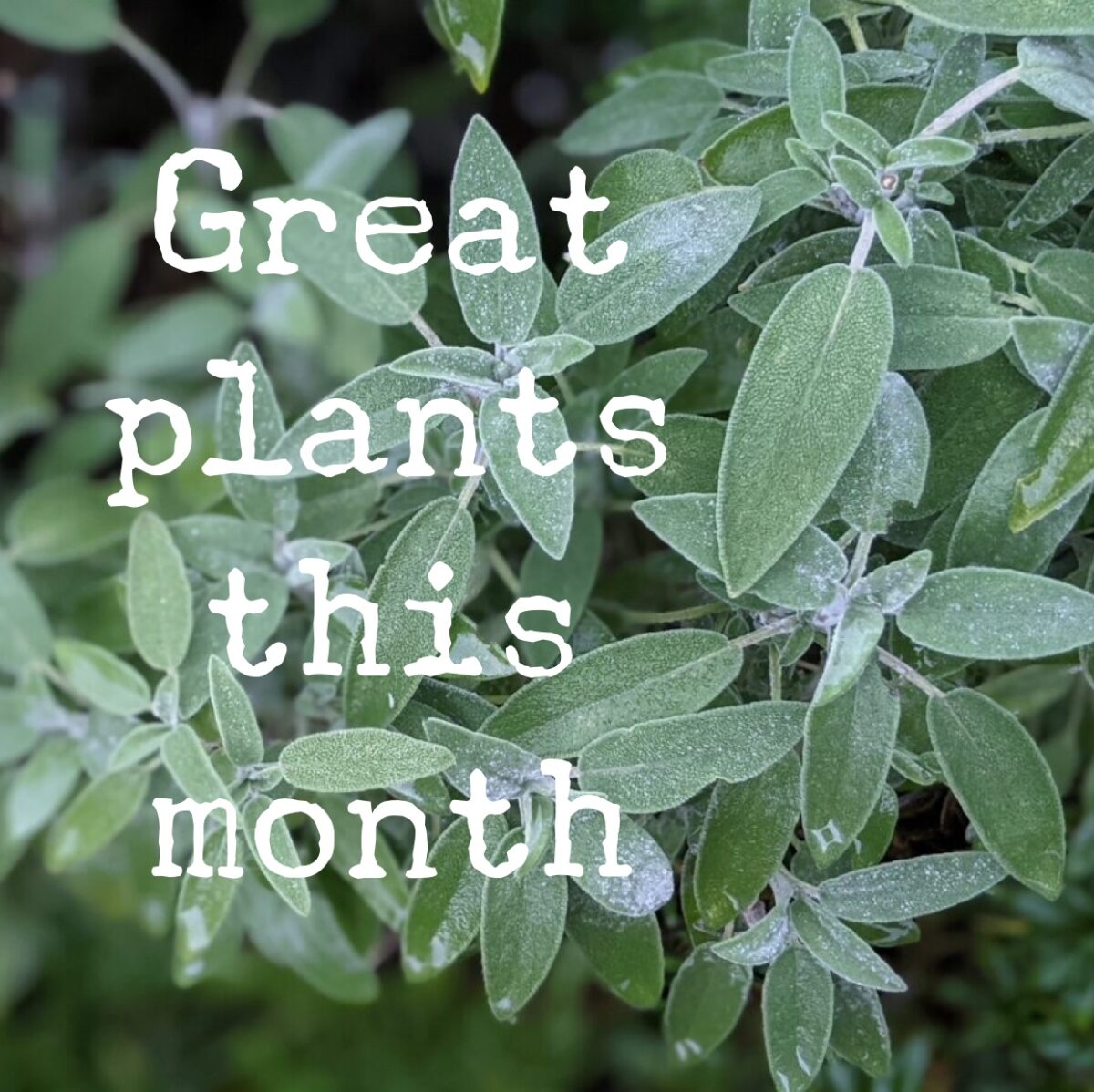
13 replies on “Beauty or beast – what makes a great winter shrub?”
Wonderful blog and am thinking of getting some pink pussy willow for my front garden. It’s in full sun, has a bank of leylander ( out of control and sucking the life out of the bed) and the bed was used by our builders as a dumping ground along with the bed in the back garden ….. so am tenth king it’s a pretty harsh environment for. Pussy Willie to thrive, fingers crossed
Hello Ruth, Laura here and thanks so much getting in touch. The prospective site for your willow certainly sounds like a bit of a challenge, but willows are tough things, adapted to colonising wasteland and you see them growing in the most inaccessible places so it’s worth a go. I would definitely be watering well for first year or two though, willows reputedly like damp places but mine grow almost too well in ideal places and turn into thumping great beasts, so actually a sub-optimal site can make them easier to manage! Good luck with it – let us know how you get on..Best wishes Laura
I’d be worried about the lack of water as remember willow definitely lives best by water. I have quite a lot, not this one yet but will have soon, and I have found some new cuttings I put out even though just rooted have died off if its a dry summer so just a point to watch out for.
Love all your recommendations and instantly regret not having found them years ago so I could have such nice specimens as on the pictures. Have added the pink pussy willow and the Coronilla to my list of must haves on my desk. Its not as easy as you may think finding these plants over the channel! But I will try. Thanks for your inspiration. I always love it – even if I don’t always react. But I know that is being a voyeur and isn’t very constructive. But rest assured, I’m sure everyone else feels the same! Joy, a growbags chat has fallen into my inbox. Yippee ….
Ah, you are so encouraging, Caroline! Elaine here. We are thrilled that so many folk seem to like our musings. You’re right that France does seem to be behind the UK in offering a great variety of interesting plants to buy, though it seems to me that the situation has vastly improved in the last few years. Many more people, certainly in the Normandy region, seem very keen on improving their gardens these days, and that is just so wonderful, because it will drive plant-suppliers to increase the range and quality of their stock. Good luck with finding the willow and the Coronilla, and give my love to your corner of France – perhaps it won’t be TOO long before we are back there………………
Fantastic recommendations and I’m on to Parkers now. I always order lots of bulbs from there but have never branched out so to speak! I still think coloured frons of cornus sibirica , cornus flaviramea and mid winter fire together with some rubus of varying sorts again as seen at Wisley is hard to beat and if youve got room for a betula jacquemonti or two also you certainly have a winter wonderland. Many thanks this weeks suggestions are marvellous even the ones from Scotland!!
Hello Cleone, that wonderful grouping of cornus and rubus at Wisley you describe was exactly where I took the photo of the pink willow last winter! – towards the back of the clump. You’re right it’s a winter planting combination made in heaven, unfortunately too far for us to travel to at the moment.
Thanks for your comments – you sound like you really know your stuff and that we could probably learn a thing or two from you rather than the other way round ? best wishes and happy gardening Laura
Coronilla, I took cuttings of the smaller one and of a much older one which grows to a small tree in north cornwall in early July, to my amazement they all took very easily and are now about 18″ tall, though not flowering.
Hi Alison, Elaine here. Well done for your success with Coronilla cuttings – isn’t it wonderful when these little twiggy bits just ‘get’ what you’re trying to do and sprout roots most obligingly. Bloomin’ miracle, in fact! I hope they start flowering soon for you.
Ha Ha! You made me chuckle, and that’s not easy in locked-down Scotland! That Pussy Willow looks fab. I’ve been swithering about buying one. If only I could find a spot for it….hmmm. Edgworthia always catches my eye in the GC in late winter too. As for Chaenomeles…well, you won’t see mine much before April in Eastern Scotland. The idea of a Southern walled garden where a Frost is rarer than a Tesco Delivery slot is my idea of heaven! Great blog ladies. I must say…Coronilla is a gorgeous winter flowering scented plant. I lost mine by pruning it too hard. I shall have to get a new one! 🙂
Thank you so much for taking the time to comment on our blog, we’re so pleased it raised a smile! Caroline here. Laura says that pussy willow is as tough as old boots – well a few winters in Strathpeffer will soon test that theory. Do you grow Edgeworthia? Is it tough enough for you? I’d love to give it a go but can’t believe it would survive. I also agree – anyone who gardens in Scotland for 20 years should get a southern-facing, walled garden as a long-service medal! Very best wishes to you and thank you very much for joining in! XX
No, Like you Caroline, I have never been able to believe that Edgworthia would be happy here, so have never tried it. 🙂 xx
Yes I did longingly stroke the edgeworthias at Wisley when I visited with Laura a couple of years ago, but she told me to keep walking! Wonder if anyone else has had any luck with them in Scotland?